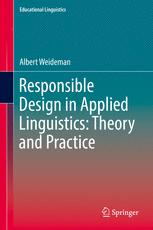

Most ebook files are in PDF format, so you can easily read them using various software such as Foxit Reader or directly on the Google Chrome browser.
Some ebook files are released by publishers in other formats such as .awz, .mobi, .epub, .fb2, etc. You may need to install specific software to read these formats on mobile/PC, such as Calibre.
Please read the tutorial at this link. https://ebooknice.com/page/post?id=faq
We offer FREE conversion to the popular formats you request; however, this may take some time. Therefore, right after payment, please email us, and we will try to provide the service as quickly as possible.
For some exceptional file formats or broken links (if any), please refrain from opening any disputes. Instead, email us first, and we will try to assist within a maximum of 6 hours.
EbookNice Team

Status:
Available0.0
0 reviewsNo mere history of applied linguistics, this volume presents a framework for interpreting the development of applied linguistics as a discipline. It offers a systematic account of how applied linguistics has developed, articulating the philosophical premises that have informed both its emergence and its subsequent growth. It asks questions that are seldom asked: Where does the discipline derive from? Where is it heading? What directions has it already taken? Which direction should it embrace in future? What is the relative worth of all of the variation in design and methods that have been developed by applied linguists? In defining applied linguistics as a discipline of design, it takes us beyond the diffuse and sometimes contradictory conventional definitions of the field. The framework of design principles it proposes not only helps to explain the historical development of applied linguistics, but also provides a potential justification for solutions to language problems. It presents us with nothing less than an emerging theory of applied linguistics.